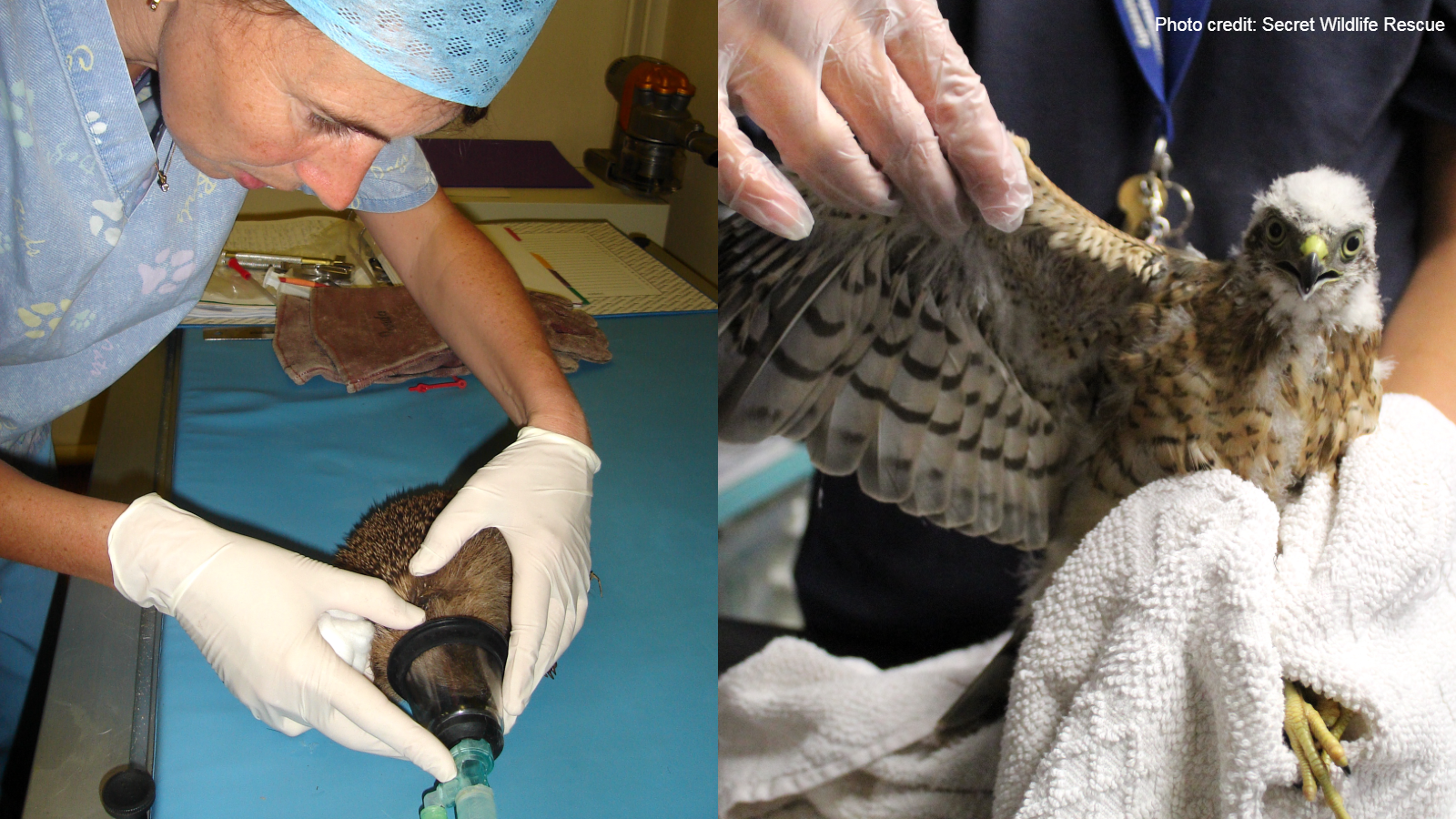Standing up for the veterinary profession
08 Aug 2024
21 Nov 2023 | Liz Mullineaux
As a 2023 BVA survey finds a sharp increase in vets reporting antimicrobial resistance (AMR) concerns about off-license antimicrobial use under the cascade, BVA President and wildlife vet Liz Mullineaux advises vets who treat wild animals to stick to the basic principles of responsible prescribing.

As a wildlife vet in the UK, I’m frequently frustrated by cases referred to me having been given antimicrobials inappropriately. In some cases, this will involve vets I know personally and that I know can do better. It seems where wildlife is concerned, all antimicrobial common sense goes out of the window.
Move to my weekend shift in an emergency clinic however, and I can rapidly become at risk of becoming that same vet! Whilst I’m in my happy place with ‘wild’ wildlife, with an ‘exotic pet’ I’m as frequently outside of my comfort zone as many of my colleagues.
It’s not hard to see why this might happen. We are confident with things we deal with all the time. When we are dealing with species that we feel less confident about, often in busy pressured situations and with an owner who insists that they know far more than we do, it’s easy to panic and reach for the bottle of enrofloxacin. Whatever the species in front of us, however, it’s always important to keep our prescribing principles, especially where antimicrobials are concerned and perhaps especially in exotics and wildlife, where risks associated with antimicrobial resistance (AMR) can be greater.
The principles of good prescribing as outlined in guides such as BSAVA’s ‘PROTECT ME’ posters apply equally to all species and are easy to follow. First up is answering the question- does the animal need antimicrobials or could the clinical signs be related to a management issue? Does the animal maybe just need other supportive care? These things are common in both exotic pets and wildlife cases. Take a good history, even with wildlife, remembering that taking time to do this can be great bonding with the client. Do a good clinical examination, which in some situations may require anaesthesia or deep sedation to carry out safely. If on a case-by-case basis you feel that antimicrobials are needed, they should be selected carefully, using narrow spectrum drugs in the first instance, and culture and sensitivity testing before changing the drug.
Owner and animal compliance when it comes to drug administration can be more challenging than in other species, so consideration needs to be given to this, ensuring wildlife centre staff, for example, can safely and effectively continue any course of drugs. Different drug formulations, ways of hiding medication in novel food sources and sometimes teaching clients to give injections are all techniques that are frequently used.
Having good sources of information to hand is essential too. Easy reference textbooks and a good exotic animal formulary should be standard in all vet practices. CPD for exotics and wildlife is readily available and having at least one or two enthusiastic staff members (ideally a vet and an RVN) can ensure good up to date information for others. Although in the past there has been a lack of an evidence base for treatment of some conditions in some of these species, there is increasingly other published literature available. In 2022, the Best Scientific Paper Award at BVZS Congress in 2022 was awarded to a paper on ‘Antibiotic stewardship for reptiles’ by Jo Hedly and colleagues, and this is just one example of new literature available.
If we go back to treating wildlife specifically, prudent antimicrobial usage is probably more important than it is for domestic species. When we treat and release wild animals we have a potential impact on the broader ecosystem, with a risk of transfer of antimicrobial resistance. In the long-term this can become a true ‘One Health’ issue impacting upon wildlife, domestic animals, and humans.
Often when we are working with wildlife, we work alongside wildlife rehabilitators, who are frequently very experienced at caring and rehabilitating these animals back to the wild. Historically there has been huge overuse of antimicrobial drugs in this sector, often as the result of poor veterinary prescribing, sometimes under pressure from rehabilitators who can seem to know more. Discussing drug use and the potential for AMR with wildlife rehabilitators is clearly key to overcoming this discord. Just like exotic pets, some wildlife cases do just need good supportive care.
There is also the perhaps understandable, but often inappropriate, attempt in some instances to try and save every wild animal. Others are casualties of either nature or human interventions and from a welfare perspective need a firm veterinary euthanasia decision. Throwing antimicrobial drugs at hopeless cases is in nobody’s interest.
Where antimicrobials are prescribed to wildlife in Standard Operating Procedures by vets familiar with the wildlife centre and visiting on a regular basis (as outlined in the new RCVS Under care Guidance and the BVZS Good Practice Guidelines for Wildlife Centres), it is important to stipulate which drug, at what dose, in what circumstances, in which species, can be used. Such prescribing requires very carefully worded SOPs, which vets should expect to be asked to write for the wildlife centres they work with.
So, when you see exotic pets and wildlife, stick to your antimicrobial principles!
Read our article on vet concerns around antimicrobial resistance, based on findings in the latest BVA survey.
Get tailored news in your inbox and online, plus access to our journals, resources and support services, join the BVA.
Join Us Today